“Pre-Code Retro” is my semi-regular examination of post-1934 media that is heavily influenced by or is significantly related to pre-Code Hollywood cinema.
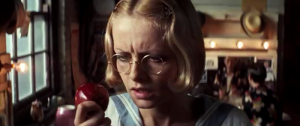 |
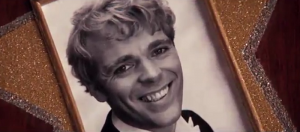 |
| Polly Browne Twiggy |
Tony Brockhurst Christopher Gable |
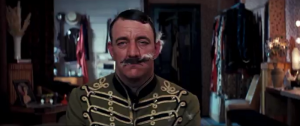 |
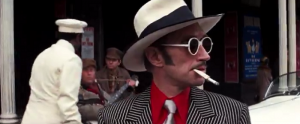 |
| Percy Parkhill Byran Pringle |
De Thrill Vladek Sheybal |
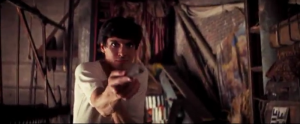 |
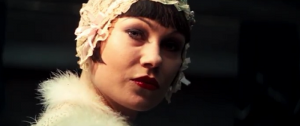 |
| Tommy Tommy Tune |
Maisie Anotonia Ellis |
| Released by MGM | Directed By Ken Russell | |
The Boy Friend: Three Cheers for 42nd Street
“Polly, listen to me. You’re going out there a youngster. And you have to come back a star!”
The 1970s were a pretty turbulent time. I’m sure you’ve picked up on this from textbooks and whatnot, but it was also a turbulent time for cinema. Starting with the death of the Production Code in the late 1960s and the advent of “New Hollywood” in the early 70s by way of films like The Graduate and Bonnie and Clyde, movies lurched away from three decades of mostly unambitious fodder.
One very infamous film that came early in this era is Ken Russell’s The Devils (1971), a movie which I must admit I haven’t seen but not from a lack of trying. But I do know it by reputation, a drama about a priest who is blamed for being too darn sexy, and his persecution by a cloistered, sexually-repressed convent. It’s the kind of movie that features a crazed mob of nuns raping a life-sized crucifix, if you need to understand why it’s so controversial. Because its spent much of its history being banned or heavily censored, it’s become very rare to find a complete version of the film, with the last official American release on physical media being on videotape.
But we’re not here to talk about The Devils. In fact, on the complete opposite end of the depravity spectrum is the other film Russell directed in 1971, The Boy Friend. An extrapolation of a 1954 satirical stage play by Sandy Wilson, The Boy Friend is a sweetly innocent ditty filled to the brim with a jubilant love of 1930s film musicals. It’s one of the nicest films I’ve ever seen about the theater, film, and human hope and aspirations, backed by a sincere admiration for all of what Busby Berkeley and his ilk did for movies.
For example, let’s run through a few homages while we’re here:
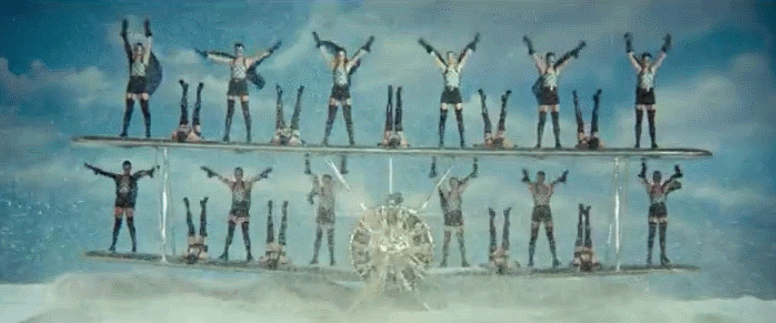
As in Flying Down to Rio (1933)
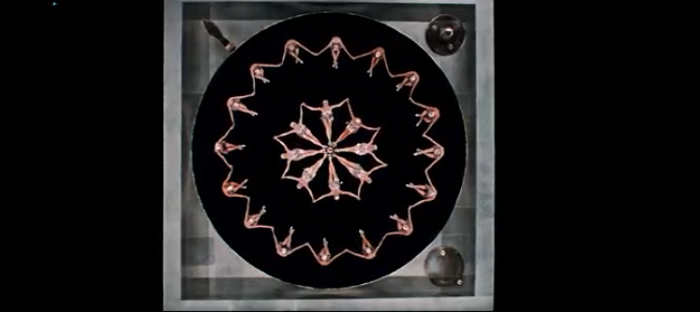
Footlight Parade (1933)
And plenty more. But Russell isn’t content with mere recreations. Rather, Russell’s impulses seem to be to take everything Berkeley did and double it. Almost literally, in fact– twice the number of swimming pools with chorines arranged geometrically is one notable example. The film’s aspect ration is twice as wide as the standard Academy format. The film’s 135 minute running time is practically double that of any pre-Code film. Add on the film’s sumptuous color photography and you can see, in this way, The Boy Friend isn’t just paying homage, but expanding and updating pre-Code musicals for a new generation.
Let’s round up the plot, which is both understated and surprisingly complex. Polly is the assistant stage manager at the Theatre Royal in London. It’s just a normal matinee showing of their musical The Boy Friend when the famous film director De Thrill shows up and takes a box seat. To make things more complicated, the star of the show, Rita, has broken her leg and Polly must go on and take her place. We follow the play for the next two hours as most everyone vies for De Thrill’s attention by upstaging one another save for Polly, whose secret crush on the play’s leading man threatens to spill out on the stage. Meanwhile, many of the players, from the aging stage manager to the tap dancing amnesiac, take turns imagining the musical numbers growing beyond their stage setting and into the realm of high flying fantasy.
With nearly 20 people in the main cast and scenes sometimes happening simultaneously backstage and front stage as well as the many trips into the fantastical, it could be very easy to get lost in the labyrinth of the movie. But Russell is completely assured and excellently balances all of the movie’s dramas, from the little to the big.
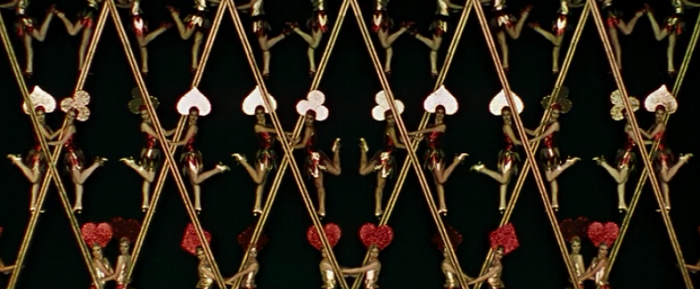
Oh, what, like you haven’t had this fantasy?
The musical numbers, though, have some gloriously silly and wonderful set pieces. Some moments, like a lengthy silent film homage involving wood nymph, Pan, and Odin all outdoors, seems almost Alejandro Jodorowsky-ish in their melding of the fantastical, the overblown, and the ability to parallel the plot and symbolize the emotional currents while remaining playfully opaque. Others, like the lengthy dual between two women dressed as dice and then playing card suites, owe a big debt of influence to Dames (1934) as well as the Vegas-inspired musicals of the 1950s with Dean Martin and Frank Sinatra. And then there’s stuff I can’t even classify, moments like a miniature golf course that, for lack of a better description, turns into a sort of giant mushroom Smurf village that ends with stars Twiggy and Christopher Gable dressed as babies and crying a la The Band Wagon (1953).
And while I appreciate a great deal of beautifully-realized visual insanity as much as the next guy, it’s the crisscrossing backstage drama that makes The Boy Friend so irresistible. The characters have wonderfully lived-in personas, helped by the way Russell shoots the non-fantasy elements with a minimum of makeup or glamor. Twiggy, who was (and probably still is) better known as a fashion model, gets her big break here, and plays Polly with heartbreaking sincerity. She’s a wide eyed cockney girl who by the end dominates the show by simple virtue of being so beautifully pure of heart. Twiggy sells it all with delicacy and verve, and she even belts a mean tune or two.
The rest of the cast is great, too. Christopher Gable (no relation to Clark, in case you were wondering) plays Tony, a man so nice and handsome that you can never quite piece together when he’s acting and when he’s sincere– which is bad news for Polly. Also notable is Tommy Tune playing an aptly named Tommy, whose tap dancing routines (including a knickerbocker twist) are among the film’s more kinetic highlights. He plays greatly off of Maisie (Antonia Ellis), one of the more wicked of the play’s stars, who uses subterfuge and a bit of French to try her best to elevate herself to the top of De Thrill’s heap.
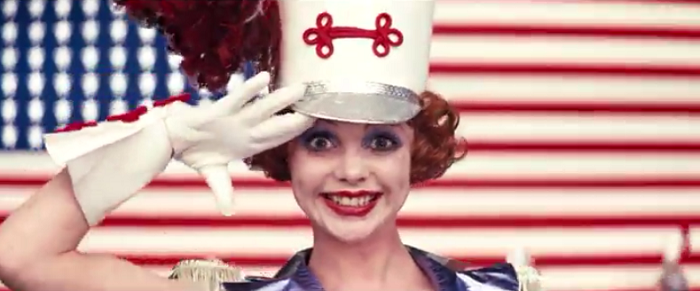
Also, big props to whoever was in charge of the mascara for the film.
I love the way that Russell directed the film, as he plays with the audience’s expectations throughout. One of my favorite bits is a long tracking shot upon Polly as she stands center stage with her back to the play’s audience as the handsome Tony approaches her. It’s a lengthy scene of just Polly’s reactions, and something completely inappropriate for the stage show since she’s got her back to the audience for a full minute. But it works! The stage lights on Polly make her radiant, and the look of pleasure and adoration she has for Tony and her desperation in trying to not let them get out of control are consistently battling on her face. Framing her away from the sets and props helps underscore how Polly’s acting abilities come from who she is, not from the ticks and mannerisms that so many other performers desperately trot out. This is just one such shot in the film, but its perfectly subtle while saying so much. The movie is crammed with moments like these.
The film’s abundant plots and subplots touch on a variety of issues as the diverse cast reeks of post-World War I (and maybe a bit of II) bitterness and British class warfare. One actor even threatens to quit after being told to play with a Cockney accent to match Polly’s because he finds it so undignified. But the main uniting factor between all of the players on the stage is their ambition and desire. Some are has-beens, and most are never-will-bes, but each go out and give it their all to a sparsely attended matinee on one fateful afternoon in hopes of taking their career to that next step and becoming, by De Thrill’s hand, a star. The movie is about how not only is it necessary for an audience to get lost in the fantasy of a production, but for the people on the stage to believe in what they’re doing. To be an actor, producer or star, it takes a massive delusion to get through another day. Even if they don’t make it to Hollywood, they all have a rueful smile, knowing that they gave it their best shot and that tomorrow will be another matinee.
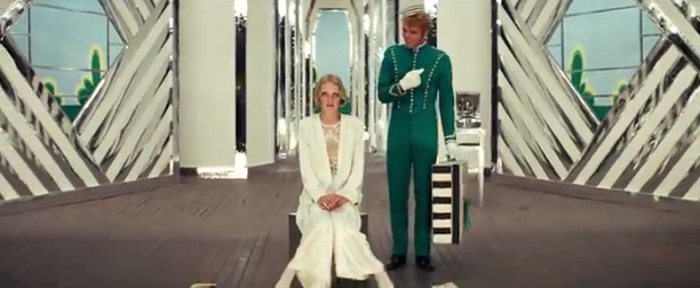
The thin sight line between love and hate.
The Boy Friend is an ode to the joy and power of musicals and one of the best of its kind. Ken Russell has an eclectic sense of detail, filling every frame with imagination and vitality. The film’s costume designer, Shirley Russell, and production designer, Tony Walton, also need to be given proper credit for creating an ebullient atmosphere where anything is possible. The Boy Friend, first and foremost, is about the powers of hope and imagination. It’s a vital testament, one that magnifies its pre-Code brethren out of admiration and necessity and proves itself to be a great movie about how great movies can be.
Gallery
Hover over for controls.
Trivia & Links
- Twiggy, the star of the picture, was an early 70s fashion icon, and this was her first major film. As such, most reviews of the time comment on her acting ability with some measure of satisfaction.
- TCMDB’s article by Felicia Feaster talks about the film’s place in Russell’s filmography and its original release issues:
Despite its many charms, The Boy Friend is often seen as an inferior film to Russell’s “serious” dramas like his adaptations of D. H. Lawrence’s Women in Love (1969) and The Rainbow (1989). But there is no denying Russell’s wholly original and inventive self-reflexive approach to classic Hollywood musicals. Not content to merely honor those films, Russell also gives The Boy Friend a modern touch by introducing British class tension, hints of lesbianism, bawdy physical comedy and a telling comparison of film and stage craft. Russell shows where his prejudice lies, showing how in the moments of film fantasy that anything is possible, as opposed to the stage where rules of gravity and reality weigh more heavily.
Much of the criticism of The Boy Friend may also be due to a badly edited American release of the film, from which 14 minutes and key plot points were trimmed, which negatively influenced perceptions of this utterly magical film.
- Russell sneaks an in-joke to his film The Devils (1971) when he has Murray Melvin’s character say, “I think I’ll take up the cloth.” His character in The Devils was a priest.
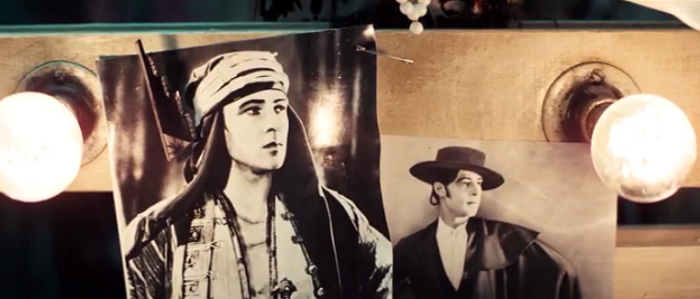
A less intentional in-joke is this close-up of the photos of Rudolph Valentino. Russell would go on to direct a very loose biopic of the famous silent film star in 1977.
- Roger Greenspun in The New York Times says that this one is right up his alley:
Therefore, “The Boy Friend” contains enough for 20 ordinary movie musicals. There are production numbers within production numbers and styles within styles—beginning with the stage properties of the poor provincial troupe (which look elaborate enough to bankrupt all of Broadway) and proceeding to the kind of calculated excess in which, for example, one giant phonograph turntable spinning a geometric arrangement of chorus girls suddenly splits, amoeba-like, into two giant turntables—as if the first commandment of cinema were: “Be fruitful all, and multiply.”
You will say, “Busby Berkeley.” But with Mr. Russell, what goes in as Busby Berkeley comes out feeling Venusberg in a road company “Tannhäuser” [Danny’s note: no idea] —an arrangement that may not be to everyone’s taste. I am surprised to find that it is rather greatly to my taste; partly because it is often as witty as it is elaborate, partly because it works its variations on the fully recognizable and still quite wonderful Sandy Wilson words and music, and partly because it is supported by a charming and energetic cast.
- FilmFanatic.Org calls the film’s dismissive reviews “inexplicably scathing” and says it’s a must see. One of the comments also notes that the movie in its once rare letterbox format was called “Ken Russell’s Uncut Boy Friend”. *rimshot*
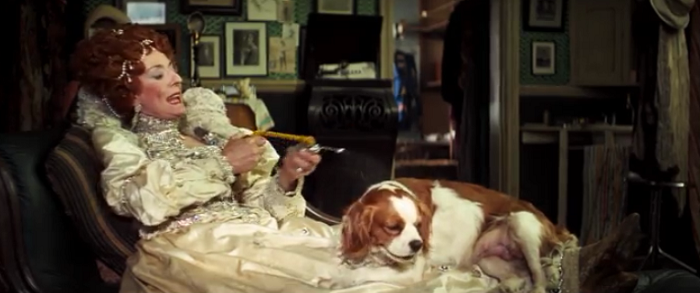
Pre-Code…. uh, Retro dog watch: the lead actor’s wife has this very lovely specimen. “He’s not a dog… he’s a King Charles!” she pronounces.
- The original stage production of The Boy Friend starred Julie Andrews as Polly. She was initially approached to play the cameo part of the stage star Rita whose leg fracture kicks off the plot. Glenda Jackson, a Russell regular, ended up in the role instead.
- Glenn Erickson, the DVD Savant, admits the film has its flaws, but he is still quite taken with Russell’s homages. On the time it was released specifically:
In 1971 the camp rediscovery of Busby Berkeley hadn’t quite filtered down from the New York smart set to college campuses, so most audiences were taken by surprise. Russell also didn’t cheat, in that he created his graphic illusions with the same organic methods Berkeley used. These homages are more than copycat exercises — design-wise, some are refinements on Berkeley’s originals. Russell’s syncopated chorines show themselves to be better dancers than Berkeley’s squads of exhausted Hollywood showgirls.
It also needs to be said that Russell and his designers and choreographers come up with scores of arresting dance and performance inspirations on their own — the creativity on display in The Boy Friend is dazzling. Unlike the Rodgers & Hammerstein operetta + ballet musicals that had dominated screens for fifteen years The Boy Friend entertains through pure performing oomph — those four key “girlfriends” are terrific dancers and comediennes. Tommy Tune’s long-legged specialty dancer is a perfect match for the kind of tap-dancing wonders that emerged from New York’s vaudeville circuit.
- Here is the original Trailers From Hell video that sold me on checking out the movie before:
Awards, Accolades & Availability
- This film was nominated for an Academy Award for Best Music. It also won Twiggy a Golden Globe for Best Actress in a Comedy or Musical as well as Best New Star.
- This film is available on Amazon and Warner Archive.
- On a slightly different note, I usually don’t ask for many favors around here, but if you have Facebook and could go to Warner Archive’s page and ask them to release The Boy Friend on blu-ray, you’d be doing me a huge favor. The more people who press them, the more they have to consider it. Since they already have a high definition master, hopefully it wouldn’t take much work. So please, please, please make a post!
Comment below or join our email subscription list on the sidebar! |
||
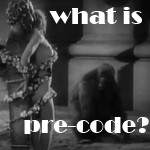 |
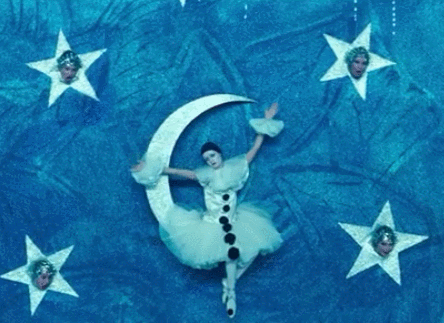 |
 |
 |
 |
|

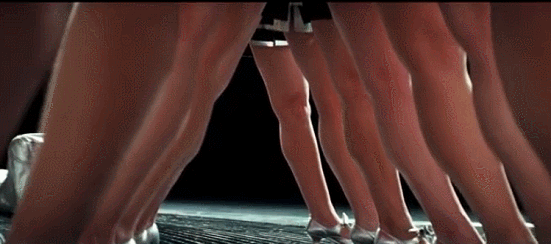
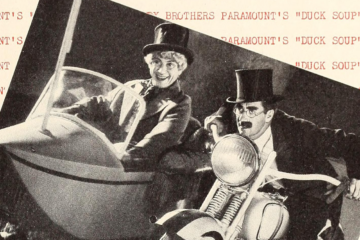


7 Comments
Random Pictures · July 21, 2014 at 9:29 am
What a great post! I haven’t managed to see “The Boyfriend” yet, but now it’s towards the top of the list. I saw “Footlight Parade” recently for the first time–on a big screen, no less, so I’m primed. (I did watch the VHS version of “The Devils,” which is decidedly *not* a Busby Berkeley homage but totally worth hunting down.) Thanks.
Danny · July 25, 2014 at 1:44 pm
Cool, hope you track it down and enjoy!
shadowsandsatin · July 26, 2014 at 3:14 am
I enjoyed your write-up, Danny — sounds definitely worth seeing!
Danny · July 28, 2014 at 9:30 am
Thanks Karen. Hope you get a chance to check it out!
Alex Cruz · August 24, 2015 at 5:09 am
Hi Danny! “The Boyfriend” is one of my all-time favourite films. I first saw it at the tender age of thirteen. Here in Canada, where I live, one of our local tv stations used to play obscure and/or ‘cult-y’ films late at night. (Alas, like most smaller tv stations its since been gobbled up by a larger television conglomerate content with playing reality tv rubbish and syndicated tv shows.) But, I digress. The movie just was so just weird and wonderful and totally appealing to my burgeoning queer sensibilities. It was an homage to all the pre-code musicals I’d enjoy with my gran. Twelve years later I was able to catch it on Turner Movie Classics (which frequently broadcasts pre-code films). Thanks for your post. And am enjoying your blog. Take care. All the best.
Danny · September 1, 2015 at 5:57 am
Thank you for the nice story, and thanks for coming by!
Devon Rains · May 6, 2017 at 11:34 am
now that Warner Archive has just released this on Blu Ray I will have to check it out! Sounds like my kind of movie!
Comments are closed.